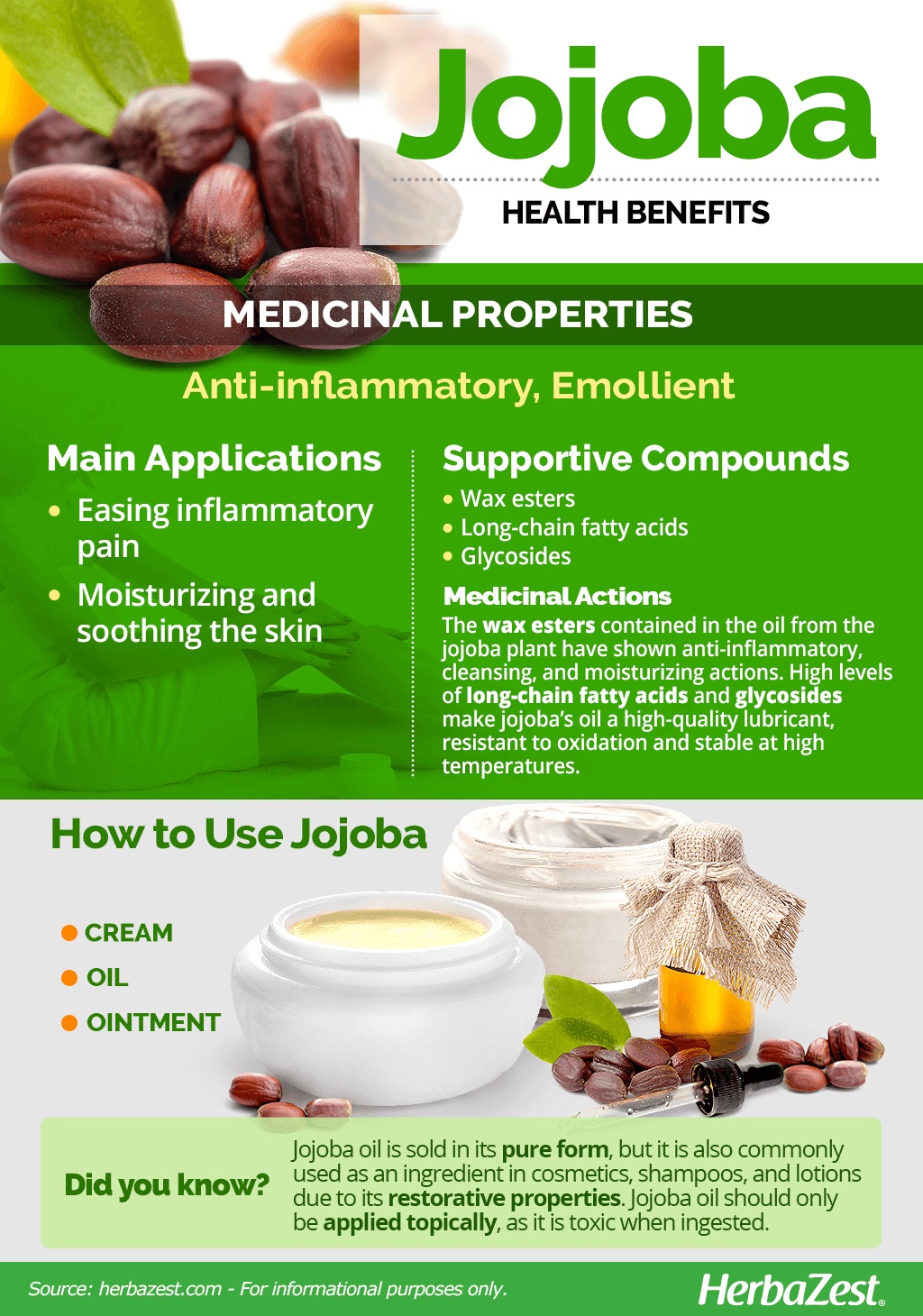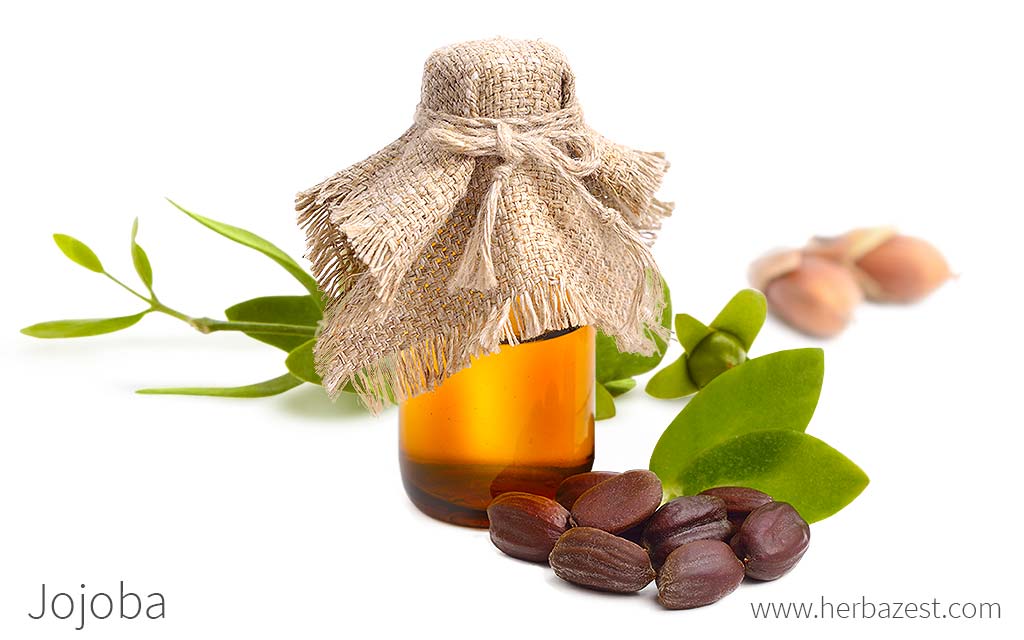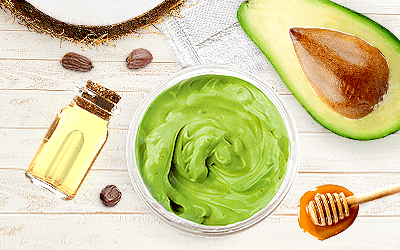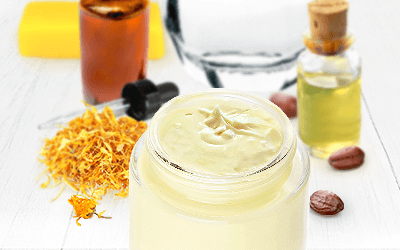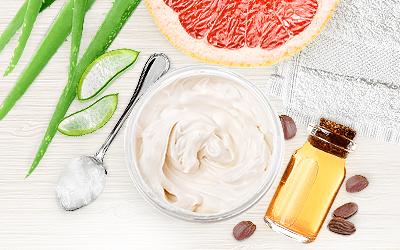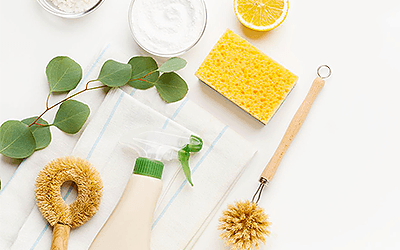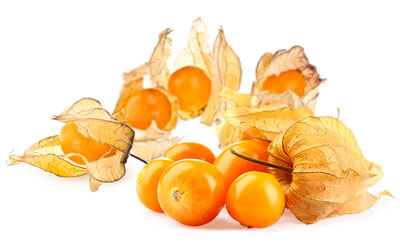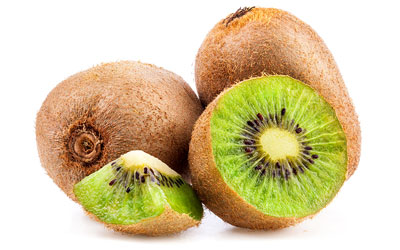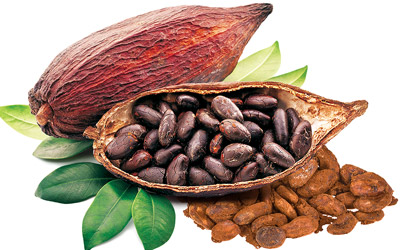Jojoba is native to the Sonora Desert in northern Mexico and the southwestern United States and has been a highly valued plant for centuries. It is a folk remedy for colds, dysuria, poison ivy, sores, sore throat, warts, and other skin conditions. Today, jojoba's main industry is cosmetic, as it is used in countless skin and hair products for its restorative properties.
Jojoba Medicinal Properties
- Medicinal action Anti-inflammatory, Emollient
- Key constituents Glycosides, long-chain fatty acids, wax esters
- Ways to use Ointment, Essential oil
- Medicinal rating (2) Minorly useful plant
- Safety ranking Safe
Health Benefits of Jojoba
When applied topically, jojoba has numerous health benefits for the skin. These medicinal benefits include: Jojoba is traditionally used for:
Easing inflammatory pain. When applied topically, jojoba can relieve acne, skin redness, and eczema.
Moisturizing and soothing the skin. Jojoba's primary use is through its amazing skin care capacity. It is often used for moisturizing and soothing skin, as well as smoothing wrinkles and unclogging pores.
In addition, jojoba's medicinal properties include:
Cleansing wounds and burns. Jojoba was traditionally used for cleansing wounds and treating numerous types of burns, including sunburns.
Soothing skin conditions. Jojoba has traditionally been used to treat skin conditions, such as skin rashes.
How It Works
Jojoba oil is technically a liquid wax extracted from the plant's seed. The liquid wax makes up about half of the seed's dry weight, and consists of a 60% mixture of wax esters, fatty acids, and glycosides.
The wax esters contained in the oil from the jojoba plant have shown anti-inflammatory, cleansing, and moisturizing actions. Jojoba is also useful for unclogging pores and hair follicles, promoting healthy hair growth and clear skin. Jojoba oil is highly resistant to oxidation and is stable at high temperatures. These properties make it a very high-quality lubricant.
THE PROPERTIES OF JOJOBA WAX MAKE IT HIGHLY PRAISED IN THE SKINCARE INDUSTRY.
Other herbs with emollient and anti-inflammatory properties are avocado, aloe, and greater plantain.
Jojoba Side Effects
Jojoba oil is likely safe for most people when applied topically, but it can cause minor skin irritation or rash in sensitive individuals.
Cautions
Jojoba oil is likely unsafe when taken orally. This is because it contains erucic acid, which can be toxic when consumed and can lead to heart damage.
How to Consume Jojoba
As it is considered toxic when taken orally, all of jojoba's medicinally properties can be found in its medicinal, topical applications.
Herbal Remedies
Cream. When applied as a water-based cream, which is easily absorbed, jojoba moisturizes the skin due to its emollient properties. It is can also be applied to soothe rashes and sunburns.
Oil. In its most commercially popular form, jojoba oil, which is actually a wax, can be used to treat acne or eczema due to its anti-inflammatory properties. It is also used for the hair and scalp.
Ointment. When applied topically, this oil-based preparation of jojoba relieves skin inflammation.
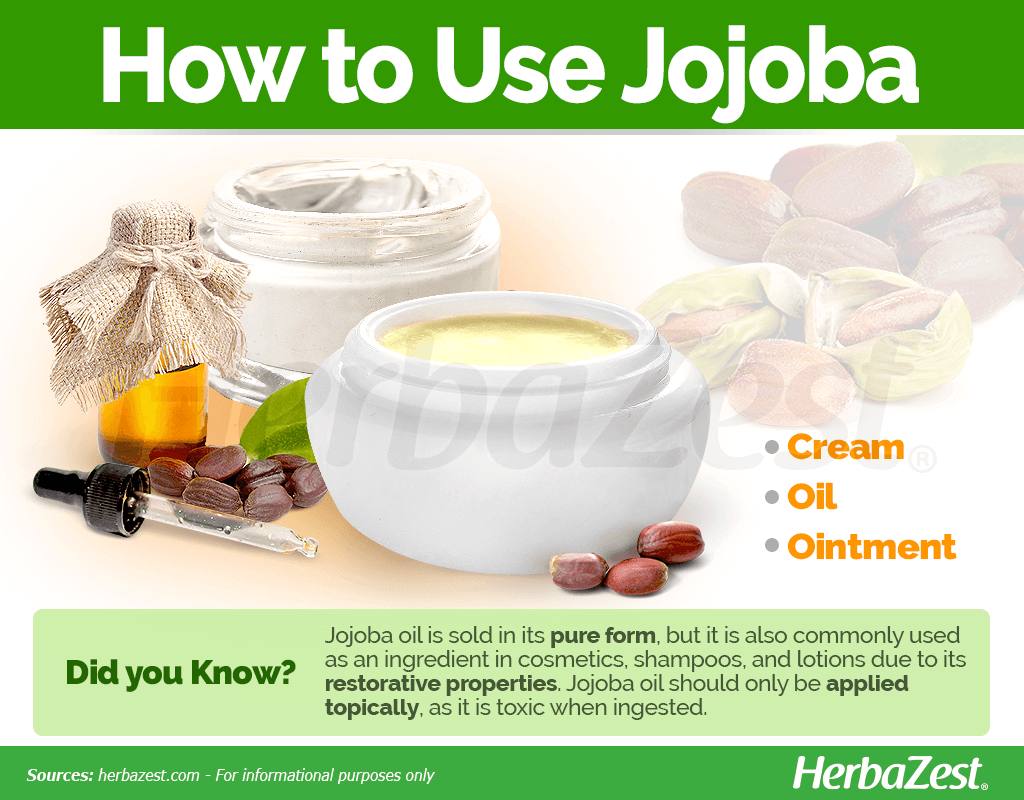
Buying
- Where to buy Supermarkets, Big online retailers, Specialized health stores, Online herb stores, Online health stores
Jojoba oil is sold in its pure, extract form. It is also commonly used in cosmetics, shampoos, and lotions because of its restorative properties. Jojoba products are available year round at most supermarkets, specialized health stores, and can also be purchased through online retailers.
Growing
- Life cycle Perennial
- Harvested parts Seeds
- Light requirements Full sun
- Soil Loamy sand, Well-drained
- Growing habitat Subtropical deserts
- USDA Plant Hardiness Zones 9a (From −6.7 °C (20 °F) to −3.9 °C (25 °F)), 9b (From −3.9 °C (25 °F) to −1.1 °C (30 °F))
- Potential insect pests Aphids, Slugs
- Potential diseases Fungi
- Potential animal pests Deer
Hailing from desert regions, jojoba thrives best in arid or semi-arid climates, where the temperatures average 80 - 100°F (27 - 38°C). While it is a low maintenance plant, it is important to note that seedlings are highly sensitive to frost, so it is best to avoid any potential cold exposure during this time. For additional growing tips, follow the guidelines below:
Growing Guidelines
Jojoba prefers light, sandy soils that have a good drainage in order to allow adequate moisture.
While very little water is required for growth, soils that contain nitrogen will help it thrive, especially during its first year.
Jojoba needs full sun exposure in order to grow.
The soil should have an ideal pH of 5 - 8.
Jojoba plants are vulnerable to aphids, thrips, caterpillars, and grasshoppers.
- Jojoba plants are also vulnerable to deer and bighorn sheep.
Additional Information
- Other uses Cosmetics, Fuel
Plant Biology
Jojoba is an evergreen shrub native to the Sonoran desert of southern California , north-western Mexico, and western Arizona. Its leaves are oblong, coarse, leathery, and can grow up to 2.5 inches (6.5 cm).
Jojoba shrubs typically grow to 3.3 - 6.6 feet (1--2 m) tall. There are reports, however, of it reaching heights of 9.8 feet (3 m). Its flowers, which typically bloom between March and May, are small and greenish-yellow, with 5 - 6 sepals and no petals.
Classification
Jojoba, or Simmondsia chinensis, is the only species within the Simmondsia genus, which is the single genus of the Simmondsiaceae family (formerly Buxaceae). Jojoba it is unique among plants in that its seeds contain an oil which is a liquid wax.
Varieties and Subspecies of Jojoba
Being Simmondsia chinensis the only member of the Simmondsia genus, there are no subspecies of this plant. However, many cultivars have been developed in Australia and Israel, among other countries, in order to improve yields and quality of this economically important crop.
Historical Information
Jojoba scrubs were first referenced in literature in the 1789 by Mexican historian Francisco J. Clavijero, who noted that the Native American tribes of Baja California prized the fruit for food and the oil for medicinal purposes, such as treating cancer and kidney disorders. Native Americans have used jojoba for a wide range of purposes, including applying jojoba oil to wounds and other skin issues.They also applied the oil to aching eyes and joints and drank jojoba preparations for colds and to facilitate childbirth.
When Heinrich Friedrich Link, a 19th century professor of botany and the director of the botanic garden of the University of Berlin, examined specimens of jojoba, he thought that they came from China and described the plant as a new species of Buxus (Boxwood) and named it Buxus chinensis.
In 1836, Thomas Nuttall, an Englishman who spent 33 years in the United States as a naturalist and explorer, collected samples of jojoba near present-day San Diego, California, placed the plant under a new genus: Simmondsia, and named it Simmondsia californica. When J. Mueller recognized that Buxus chinensis and Simmondsia californica were in fact the same species, he chose Nuttall's name, but C.K. Schneider later proposed its current name: Simmondsia chinensis.
Economic Data
Jojoba has been adapted to different countries and environments because of its high economic potential: today, 40,000 acres of jojoba are under cultivation in the southwestern U.S. Each jojoba plant may yield up to 11 pounds (5 kg) of seed (dry weight); approximately 50% by weight is the liquid wax, or "jojoba oil." One hectare can yield 2,480 - 4,960 pounds (1,125 - 2,250 kg) of oil per year, and recent prices are around $23 USD per pound ($50 per kg). In addition to its high demand in the cosmetics industry, the stability of jojoba oil makes it attractive to the electronic and computer industries.
Jojoba is also cultivated as an oil crop in South America, Africa, and Israel.
Other Uses of Jojoba
Personal care. because of its emollient properties, jojoba is used as an ingredient in shampoo and soap, as well as in lip balm, hair and scalp serum, and make-up remover.
Electronic industry. The stability of jojoba oil makes it attractive also for its use in computers and other electronic devices.
Alternative energies. Scientific studies suggest that jojoba seeds retain great energy value after oil extraction, which makes them a potential source of renewable energy that could replace the use of fossil fuels in some cases.
Sources
- Arizona - Sonora Desert Museum, Simmondsiaceae (jojoba family)
- Cosmetic Ingredient Review, Safety Assessment of Simmondsia Chinensis (Jojoba), 2008
- Energy Sources, Jojoba is a Possible Alternative Green Fuel for Jordan, 2013
- Handbook of Energy Crops, Simmondsia chinensis, 2014
- International Journal of Green Energy, Investigating the Energy Value of Jojoba as an Alternative Renewable Energy Source, 2013
- Journal of Cosmetic Dermatology, Evaluation of addictive effects of hydrolyzed jojoba (Simmondsia chinensis) esters and glycerol: a preliminary study, 2008
- Oregon State University, Simmondsia chinensis
- Pharmacological Research, Anti-inflammatory effects of jojoba liquid wax in experimental models, 2005
- Plant Varieties Journal, Jojoba (Simmondsia chinensis), 1990
- Purdue University, Jojoba
- The Encyclopedia of Fruit and Nuts, pp. 849 - 852
- Organic Body Care Recipes
- Medicinal Plants of the World, page 301
